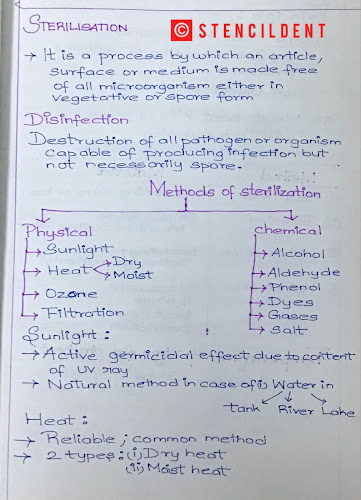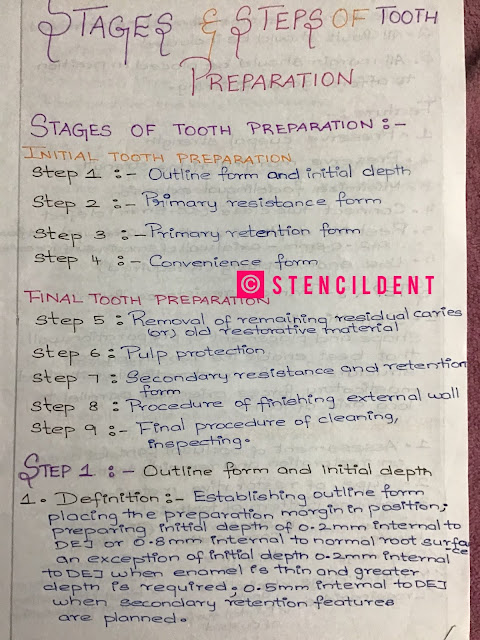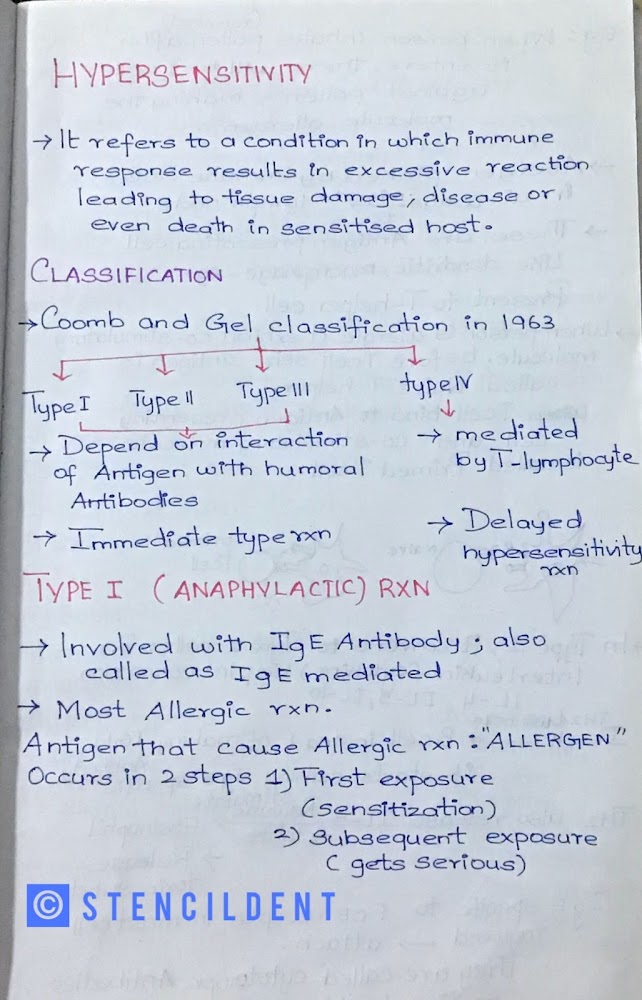Healing of tissue -Repair,process pathology notes
HEALING OF TISSUE
Hello, doctor vanakam,
The topic of discussion for today is the healing of tissues as I had informed earlier on the previous post on shock- pathology https://www.stencildent.com/2020/07/shock-pathology-notes.html here is the link for the previous post do check it out if you haven't seen it yet. without any further ado, let's get started.
CONTENTS:
1) INTRODUCTION TO HEALING
2)DEFINITION OF REPAIR AND ITS PROCESS
3) PHASE OF GRANULATION TISSUE FORMATION
4)HEALING BY THE FIRST INTENTION
5) DIFFERENCE BETWEEN FIRST AND SECOND INTENTION
6)COMPLICATION OF WOUND HEALING
1) INTRODUCTION:
- Healing is the body's response to injury in order to restore normal structure and function.
- It involves 2 processes:
2) DEFINITION OF REPAIR :
- Healing by the proliferation of connective tissue that results in fibrosis and scarring or replacement of injured tissue by fibrous tissue.
- There are 2 processes involved in the process of repair :
- Granulation tissue formation
- Contraction of wound
1) Granulation tissue formation :
- They look slightly granular and pink in color.
- there are 3 phases involved :
- a) Phase of inflammation
- b)Phase of clearance
- c) The phase of ingrowth of granulation tissue
3) PHASES OF INFLAMMATION :
A) PHASE OF INFLAMMATION:- At the site of injury blood clots and there is the exudation of plasma cells, monocytes, neutrophil that take place within 24 hours.
B) PHASE OF CLEARANCE;
- Enzymes are liberated from dead tissue and macrophages like neutrophil related, an autolytic enzyme that helps to clear of necrotic tissue.
C) PHASE OF INGROWTH OF GRANULATION TISSUE:
- ANGIOGENESIS:
- At the site of injury, initially stage the proliferated endothelial cells forms a solid bud that forms into a lumen and turns into a blood vessel which is leaky and edematous this differentiate to form muscular arteriole,thin-walled venule, true capillaries
- The process is stimulated with proteolytic destruction of basement membrane
- The factors affecting are: vascular endothelial growth factor and PDGF
2) FIBROGENESIS:
- In a matrix the newly formed blood vessel is present.
- The intermediate state between smooth muscle and fibroblast is known as fibroblast which contains surface receptor fibronectin that forms a bridge between collagen fibril
- After maturation: collagen increases, fibroblast, and new blood vessel decreases that results in CICATRISATION
4) HEALING BY THE FIRST INTENTION :
- The events associated with healing are :
- Initial hemorrhage
- Acute inflammatory response
- Epithelial changes
- Organization
- Suture track
1) INITIAL HAEMORRHAGE:
- Immediately after an injury, the surface of the incised wound gets filled with blood which clots and gets sealed.
2) ACUTE INFLAMMATORY RESPONSE:
- 24 hours later the margin of incision becomes polymorphs and by the end of 3rd-day polymorphs gets replaced by macrophage
3)EPITHELIAL CHANGES:
- After 48 hours the wound gets covered by epithelium scab is formed by the separation of an epidermal cell from necrotic material, by the end of 5th day multilayered epidermis is formed
4) ORGANISATION
- In 4 weeks the scar tissue with scanty cellular, vascular events elements, and few inflammatory cells.
5) SUTURE TRACK ;
- Each suture track is separate wound
- The sutured wound is removed around the 7th day the epithelial surface track avulsion occurs.
- A scar is formed in a sutured wound.
5) DIFFERENCE BETWEEN FIRST AND SECOND INTENTION
FIRST INTENTION SECONDARY INTENTION
1) CLEANLINESS:
Clean unclean
2) INFECTION
generally uninfected may be infected
3) MARGIN
surgical clean irregular
4) SUTURE
Used not used
5) HEALING
scanty granulation tissue extensive granulation
6) OUTCOME
linear contracted irregular wound
6) COMPLICATION OF WOUND HEALING:
- Infection
- Pigmentation
- Deficient scar formation
- Keloid formation
- Epidermal cyst
- Excessive contraction
GENERAL TALK
Vanakam, In the healing of tissue the pathology point of view we have discussed today but its time for discussion lets a have a quick talk session definitely we all must have experienced the healing process it can be self-healing that's the self-realization that one gets a sudden glow on things happening around it could be the people around you and a part of it includes toxic healing that's refreshing our feed with positivity around or dumping all the bad eating habits into a bin and think about clicking the restart button to start eating healthy during this lockdown period I am sure we all would have refed our brain and heart to heal yourselves from stress. do let me know in the comment section about your recent healing habits as that might help others visiting this post to heal themselves.
UPCOMING POST :
I hope you all liked this post, the next post would cover anaerobic culture methods: what are anaerobes, small introduction, types of anaerobes, classification, different methods to produce anaerobic bacteria if you like this post do let me know in the comment section below and don't forget to share your healing process with us.
THANK YOU








hi
ReplyDeleteYour article on tissue healing and repair offers a comprehensive overview of the body's natural recovery processes. For individuals dealing with the aftermath of acne, particularly those seeking acne scar removal, understanding these healing mechanisms is crucial. The Acne Scar Center specializes in advanced treatments that align with the body's regenerative processes, offering solutions like laser therapy and microneedling to effectively reduce the appearance of acne scars. By leveraging such specialized care, patients can achieve smoother, healthier skin.
ReplyDelete